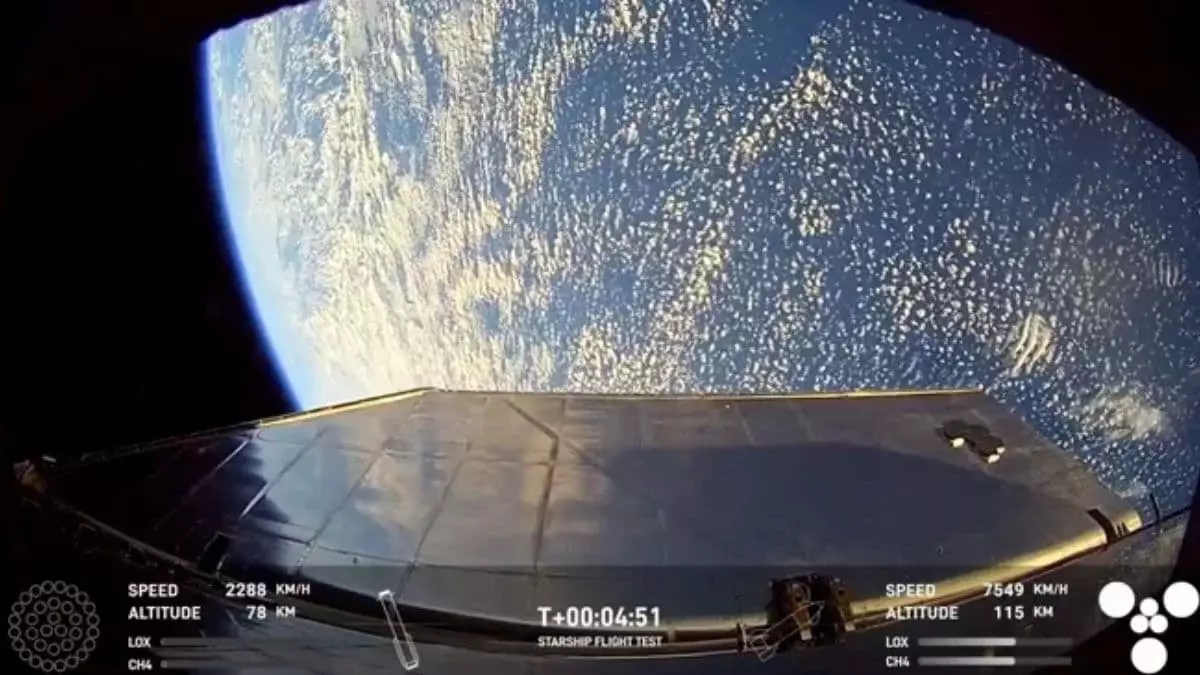On January 16, 2025, SpaceX embarked on what would become a pivotal moment in the evolution of space exploration with the launch of its Starship rocket from the Starbase facility in South Texas. This seventh test flight, stretching an impressive 403 feet, showcased the company’s commitment to advancing reusable rocket technologies. Notably, the mission unfolded several critical achievements, including a successful stage separation and the recovery of the Super Heavy booster. This was made possible through the innovative “chopstick” system, which caught the booster in a remarkable display of engineering prowess. Such successes highlight SpaceX’s relentless pursuit of an efficient and sustainable approach to space travel.
Lessons from an Unexpected Outcome
Despite the launch’s initial successes, the mission ended abruptly after approximately 8 minutes when communication was lost with the upper stage, referred to as Ship. Following this disconnection, the upper stage disintegrated over the Atlantic Ocean near the Turks and Caicos Islands, yielding what SpaceX described as a “rapid unscheduled disassembly.” This incident, while unsatisfactory, became a teaching moment for the aerospace community, emphasizing the complexities involved in developing new technologies. Witnesses caught glimpses of the explosion, describing it as a dramatic event that lit up social media platforms, serving as a reminder of the unpredictability inherent in space endeavors.
In light of the explosion, SpaceX emphasized the importance of analyzing data collected throughout the test flight to pinpoint the cause of the failure. Company representatives assured stakeholders that despite the upper stage’s demise, valuable insights would emerge from the incident, underscoring the importance of iterative testing in refining Starship’s design for the future. Through continuous analysis, SpaceX aims to enhance the reliability of future iterations of the spacecraft, demonstrating resilience and a proactive approach to addressing the challenges that come with pioneering spacecraft technologies.
Elon Musk, the visionary behind SpaceX, has championed the philosophy of embracing risk through frequent testing. This incident serves to further illustrate that tenet, as the company remains committed to its broader goal: creating fully reusable launch systems that can redefine space travel. The successful recovery of the Super Heavy booster operates at the core of this vision, advocating for sustainable practices in an industry historically characterized by one-time-use rockets.
Regulatory Oversight and Future Prospects
Looking ahead, the Federal Aviation Administration (FAA) will assess the flight data to ensure that safety protocols and operational procedures are met before future launches. SpaceX is poised to respond to any identified issues, reinforcing its commitment to safety and innovation. While the seventh test flight experienced setbacks, it also succeeded in underscoring the relentless drive of SpaceX to push the boundaries of aerospace technology. Each test, failure, and recovery bolsters the path forward in an ambitious journey to make space travel accessible, sustainable, and affordable.


Leave a Reply